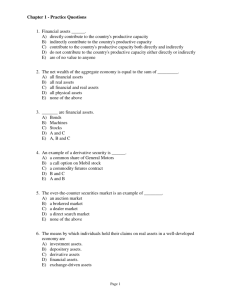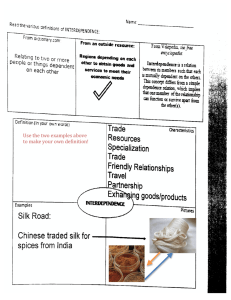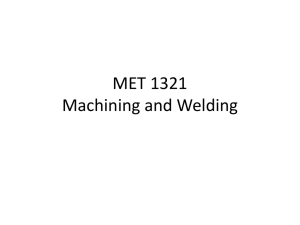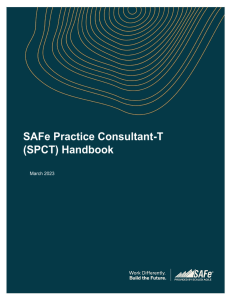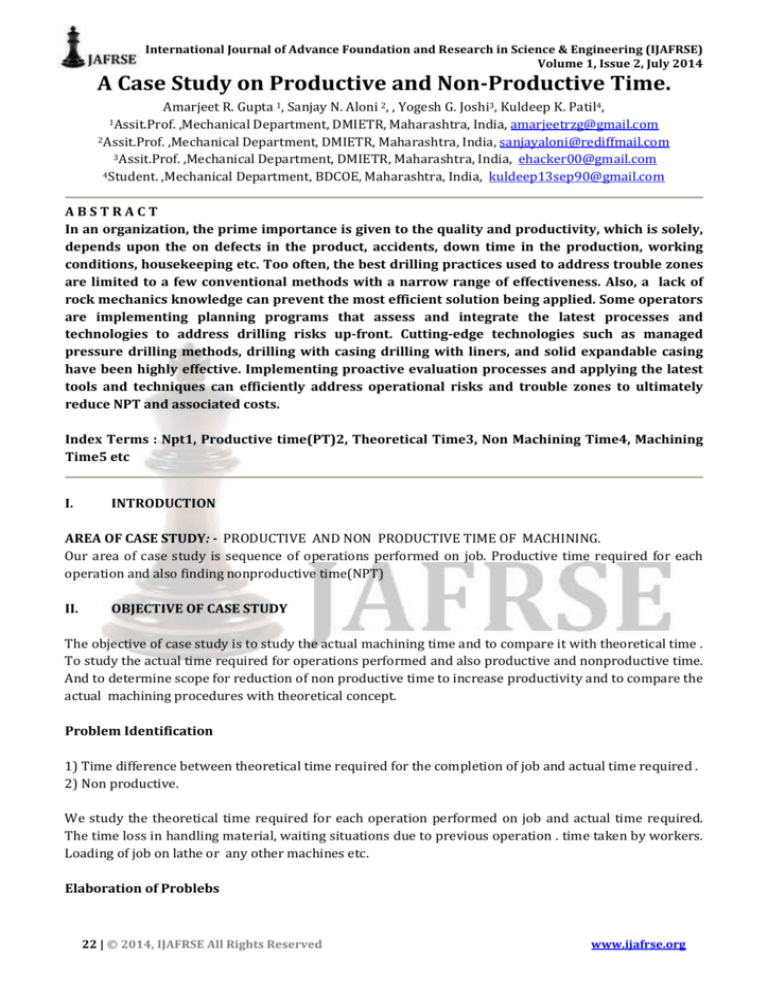
International Journal of Advance Foundation and Research in Science & Engineering (IJAFRSE)
Volume 1, Issue 2, July 2014
A Case Study on Productive and Non-Productive Time.
Amarjeet R. Gupta 1, Sanjay N. Aloni 2, , Yogesh G. Joshi3, Kuldeep K. Patil4,
1Assit.Prof. ,Mechanical Department, DMIETR, Maharashtra, India, amarjeetrzg@gmail.com
2Assit.Prof. ,Mechanical Department, DMIETR, Maharashtra, India, sanjayaloni@rediffmail.com
3Assit.Prof. ,Mechanical Department, DMIETR, Maharashtra, India, ehacker00@gmail.com
4Student. ,Mechanical Department, BDCOE, Maharashtra, India, kuldeep13sep90@gmail.com
ABSTRACT
In an organization, the prime importance is given to the quality and productivity, which is solely,
depends upon the on defects in the product, accidents, down time in the production, working
conditions, housekeeping etc. Too often, the best drilling practices used to address trouble zones
are limited to a few conventional methods with a narrow range of effectiveness. Also, a lack of
rock mechanics knowledge can prevent the most efficient solution being applied. Some operators
are implementing planning programs that assess and integrate the latest processes and
technologies to address drilling risks up-front. Cutting-edge technologies such as managed
pressure drilling methods, drilling with casing drilling with liners, and solid expandable casing
have been highly effective. Implementing proactive evaluation processes and applying the latest
tools and techniques can efficiently address operational risks and trouble zones to ultimately
reduce NPT and associated costs.
Index Terms : Npt1, Productive time(PT)2, Theoretical Time3, Non Machining Time4, Machining
Time5 etc
I.
INTRODUCTION
AREA OF CASE STUDY: - PRODUCTIVE AND NON PRODUCTIVE TIME OF MACHINING.
Our area of case study is sequence of operations performed on job. Productive time required for each
operation and also finding nonproductive time(NPT)
II.
OBJECTIVE OF CASE STUDY
The objective of case study is to study the actual machining time and to compare it with theoretical time .
To study the actual time required for operations performed and also productive and nonproductive time.
And to determine scope for reduction of non productive time to increase productivity and to compare the
actual machining procedures with theoretical concept.
Problem Identification
1) Time difference between theoretical time required for the completion of job and actual time required .
2) Non productive.
We study the theoretical time required for each operation performed on job and actual time required.
The time loss in handling material, waiting situations due to previous operation . time taken by workers.
Loading of job on lathe or any other machines etc.
Elaboration of Problebs
22 | © 2014, IJAFRSE All Rights Reserved
www.ijafrse.org
International Journal of Advance Foundation and Research in Science & Engineering (IJAFRSE)
Volume 1, Issue 2, July 2014
EN-8 round bar records its machining time required in actual process and theoretical time required ,to
find time losses in nonproductive time & productive time.
Figure 1. EN-8 Round Bar
All the activities were then recorded on a flow process sheet and have been summarized by the team. The
non-productive time for each of the above work centers was calculated.
Figure2. PRO-E Model of EN-8 Round Bar
Table 1. Process Sheet
III.
OPERATION
NO.
MACHINE
OPERATION
TOOL/GAUGE
1
2
3
4
5
6
7
8
9
10
11
12
13
LATHE
LATHE
LATHE
LATHE
LATHE
LATHE
LATHE
LATHE
LATHE
LATHE
-
FACING
TURNING
THREARING
BOARING
THREADING
FACING
TURNING
CHAMFERING
GROOVING
THREADING
TAP
INSPECTION
SPCT
SPCT
SPCT
BOARING TOOL
SPCT
SPCT
SPCT
SPCT
SPCT
SPCT
MG TAP
VERNIER CALLIPER
THEORETICAL TIME ESTIMATION1
Motor speed = 1440 rpm
Diameter of motor pulley = 3 inch
Diameter of big pulley= 2.1 inch
Diameter of pulley 1 =D1 = 10 inch
Diameter of pulley 2 =D2 = 8.5 inch
Diameter of pulley 3 = D3 = 7 inch
N1* D1 = N2* D2
1440/ N2 = 21/3
23 | © 2014, IJAFRSE All Rights Reserved
www.ijafrse.org
International Journal of Advance Foundation and Research in Science & Engineering (IJAFRSE)
Volume 1, Issue 2, July 2014
N2=205.7 rpm
N1 * D1 = N3 * D3
1440 * 3 = N3 * 7
N3 = 617
Similarly ,
N4 = 508.2 & N5 = 432 rpm
N3 * D3 = T1 * N6
N6= 617 * 7 / 46 = 93.89 rpm
T1 * N6= T2 * N7
46 * 93.89 = 52 * N7
N7 = 83 rpm
N8 = 52 * 83 / 28 = 154
N9 = 28 * 154 / 70 = 61.6 rpm=N
1. Turninig
a>
b>
c>
i>
ii>
280*0.001/0.001*62
=4.5 min
280*0.001/0.001*62
=4.5 min
280*0.001/0.001*62
=4.5 min
Similarly d=e=f=4.5 min
T=200*0.001/0.001*62
=3.2 min
P=200*0.001/0.001*62
=3.2 min
Similarly iii=iv=v=vi=3.2 min
Total time=(6*4.5)+(6*3.2)=46.2 min
2. Facing
T=L/Fn
=25.5*0.001/0.001*62
=0.41
Total time =2*0.41=0.82 min
3. Drilling
T1=L/fn
=480*0.001/0.001*62
=7.75 min
T2 =480/62=7.75 min
Total time=(2*7.75)+(2*7.75) =31 min
4. Tapping
TP=(L+D)/2*(P*N)
=(344.2+39)*0.001/2*(0.5*0.001)62
=6.18 min
5. Threading
T=L*D*d/P*V*T
=344.2*51*39/(0.5*9.8*2)
24 | © 2014, IJAFRSE All Rights Reserved
www.ijafrse.org
International Journal of Advance Foundation and Research in Science & Engineering (IJAFRSE)
Volume 1, Issue 2, July 2014
=1 hr 10 min
IV.
Comparisons between Practical Time & Theoretical Time
Table-2 Comparison between Practical Time & Theoretical Time
Sr.
No.
Operation
1
2
3
Cutting
Facing
Turning & Taper
Turning
Drilling
Tapping
Threading
4
5
6
V.
Practical
timing
(min)
-90
120
Theoretical
Timing
(min)
-50
90
Difference
Th t –Prac t
(min)
-40
30
Time
Save
(min)
-40
30
60
15
75
32
7
70
28
8
5
28
8
5
CONCLUSION
The team took up the task of reducing the non-productive time in the various work centers of the plant,
to improve the cycle time of the job. The task of reducing the nonproductive time was more economical
At each work center, the process should be elementised into smaller activities and the time for following
elements, i.e., operation time, waiting time for helper, waiting time for handling equipment, loading and
unloading time and transportation time should be reduced for increase in productivity.
VI.
REFERENCES
[1]
Eliminating Non-Productive Time Associated with Drilling Trouble Zones Patrick York,
Weatherford Int’l., David Pritchard, Successful Energy Practices, Int'l., James K. Dodson and Ted
Dodson, James Dodson Company, and Steven Rosenberg, Deepak Gala, and Budi Utama,
Weatherford Int'l.
[2]
Reference2 Lean Six Sigma application for reducing non productive time in operation theatres in
a university teaching hospital Dr Girdhar Gyani, Dr Sanjeev Singh
[3]
5S Strategy for Productivity Improvement: A Case Study R. A. Pasale Prof. J. S. Bagi
[4]
EVALUATION OF NON PRODUCTIVE TIME OF GEOTHERMAL DRILLING OPERATIONS – CASE
STUDY IN INDONESIA Bonar MARBUN, Ramadhana ARISTYA, Riantana H.PINEM, Budi S.RAMLI,
Karolina B.GADI
[5]
MACHINE DESIGN” BY R.S. KHURMI AND J.K.GUPTA (S.CHAND PUBLICATION ,CHAP. NO-29HELICAL GEARS , PG NO.-960-970)
[6]
IJESRT, “Productive and Non Productive Time” Sanjay N. Aloni1, Amarjeet R. Gupta2 , Yogesh G.
Joshi3, Pravin R. Ingole4
25 | © 2014, IJAFRSE All Rights Reserved
www.ijafrse.org


